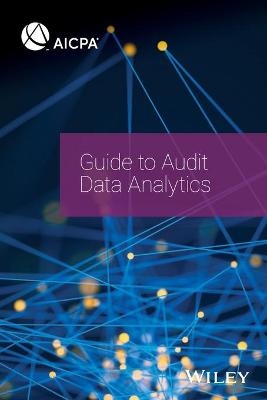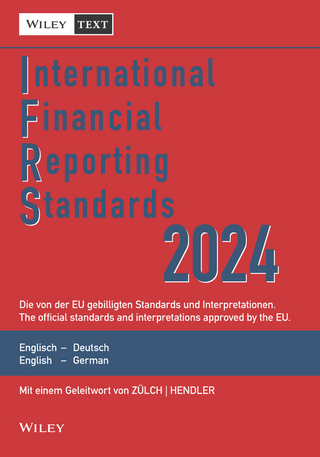
Guide to Audit Data Analytics
American Institute of Certified Public Accountants (Verlag)
978-1-945498-64-0 (ISBN)
- Titel ist leider vergriffen;
keine Neuauflage - Artikel merken
Founded in 1887, the American Institute of Certified Public Accountants (AICPA) represents the CPA and accounting profession nationally and globally regarding rule-making and standard-setting, and serves as an advocate before legislative bodies, public interest groups and other professional organizations. The AICPA develops standards for audits of private companies and other services by CPAs; provides educational guidance materials to its members; develops and grades the Uniform CPA Examination; and monitors and enforces compliance with the accounting professions technical and ethical standards. The AICPAs founding established accountancy as a profession distinguished by rigorous educational requirements, high professional standards, a strict code of professional ethics, a licensing status and a commitment to serving the public interest.
1 Introduction .01-.56
Objectives of This Guide 01-.02
Structure, Form, and Content of This Guide .03-.11
Considerations Regarding Examples in This Guide and Other Matters .12-.13
Relationship Between ADAs, CAATs, and Analytical Procedures .14-.16
Exercising Professional Judgment and Maintaining Professional Skepticism .17
Considerations in Determining Which ADA to Use to Meet the Objective of the Audit Procedure .18-.19
Using Graphics and Tables (Visualization) .20-.28
Graphics Often Linked With Particular ADAs .24
Matters to Consider Regarding Graphic Design .25-.28
Accessing and Preparing Data for Purposes of an ADA .29-.37
Accessing Data in a Format the Auditor Can Use .31-.33
Maintaining Data Security, Confidentiality, and Integrity .34-.35
Preparing the Data for Use .36-.37
Relevance and Reliability of Data .38-.45
Data Characteristics That May Affect Relevance and Reliability of Data .39
Relevance of Data .40-.41
Reliability of Data .42-.44
Possible Sequence of Procedures Regarding Data Relevance and Reliability .45
Addressing Circumstances in Which an ADA Identifies a Large Number of Items for Further Consideration .46-.47
Documenting the Procedures .48-.56
GAAS Requirements Regarding Documentation .48-.52
Screenshots of Graphics .53
Documenting Process to Address a Large Number of Items Warranting Further Consideration .54-.56
2 Using ADAs in Performing Risk Assessment Procedures and in Procedures to Assist When Forming an Overall Conclusion .01-.29
Matters Covered in This Chapter .01-.03
Specific Generally Accepted Auditing Standards Relevant to Use of ADAs in Performing Risk Assessment Procedures .04-.07
Definition of Risk Assessment Procedures .04-.07
Applying Five Basic Steps for an ADA .08-.09
Plan the ADA .10-.12
Determine the Specific Objectives of the ADA (Within the Context of Its Overall Purpose) .10-.12
Consider the Relevance and Reliability of the Data Used .13
Perform the ADA .14-.26
Identifying and Addressing Notable Items .14-.25
Addressing Risks of Material Misstatement for Remaining Population Items .26
Using ADAs in Performing Procedures to Assist When Forming an Overall Conclusion .27-.29
Appendix A Examples of ADAs Used in Performing Risk Assessment Procedures
3 Using ADAs in Performing Substantive Analytical Procedures .01-.63
Matters Covered in This Chapter .01-.02
Definition of Analytical Procedures .03
Nature and Objectives of Substantive Analytical Procedures .04-.05
Steps an Auditor Might Follow in Planning, Performing, and Evaluating a Substantive Analytical Procedure .06-.11
Auditor’s Expectations .08
Precision .09-.10
Level of Assurance .11
Plausibility and Predictability of Relevant Relationships .12-.15
Level of Disaggregation of Data .16-.18
Amount of Acceptable Difference of Recorded Amounts From Expected Values .19-.22
Investigation of a Significant Difference .23-.29
Effectiveness of Method Used to Develop the Auditor’s Expectation .30-.62
Trend Analysis .32-.38
Ratio Analysis .39-.45
Non-Statistical Predictive Modeling .46-.54
Regression Analysis .55-.62
Documentation .63
Appendix B Examples of ADAs Used in Performing Substantive Analytical Procedures
4 Using ADAs in Performing Tests of Details .01-.19
Matters Covered in This Chapter .01-.03
Certain GAAS Relevant to the Use of ADAs in Performing Tests of Details .04-.07
Nature and Extent of Substantive Procedures .04-.06
Evaluation of Misstatements .07
Applying Five Basic Steps for an ADA .08-.10
Perform the ADA .11-.19
Identification of Possible Misstatements and Actual Misstatements .11-.19
Appendix C Examples of ADAs Used in Performing Tests of Details
Appendix D Matters to Consider Regarding the Reliability of Data
| Erscheinungsdatum | 09.03.2018 |
|---|---|
| Verlagsort | NC |
| Sprache | englisch |
| Maße | 155 x 223 mm |
| Gewicht | 202 g |
| Themenwelt | Wirtschaft ► Betriebswirtschaft / Management ► Rechnungswesen / Bilanzen |
| ISBN-10 | 1-945498-64-1 / 1945498641 |
| ISBN-13 | 978-1-945498-64-0 / 9781945498640 |
| Zustand | Neuware |
| Haben Sie eine Frage zum Produkt? |
aus dem Bereich


